Georges Jacob Master in 1765 A Large Transition Louis XV-Louis XVI Period Armchair Circa 1765–1775
Of museum quality, Transition period armchairs stamped by Georges Jacob are relatively rare. They feature the dossier à la Reine (Queen’s backrest), the subtle curves characteristic of the late Louis XV period, and the straight, tapered, fluted legs with rudded grooves and carved ribbons typical of the early Louis XVI era. The most remarkable examples are the most restrained, their elegant lines—accentuated by delicate, fluid moldings—showcasing Georges Jacob’s exceptional skill.
This refined and substantial armchair, with its dossier à la Reine backrest, is crafted from antique beechwood, originally lacquered, and adorned with fine moldings and carved ribbon motifs. The whiplash-shaped armrest supports rest on slender, tapered legs.
Our Transition period armchair, stamped by Georges Jacob (who became a master craftsman in 1765), exemplifies the seamless blend of Louis XV grace and Louis XVI restraint.
Dimensions:
Height: 38.19 inches (97 cm)
Width: 27.17 inches (69 cm)
Seat depth: 22.83 inches (58 cm)
Seat height: 16.54 inches (42 cm)
Condition:
This armchair has been expertly restored and is in excellent condition. It has been newly upholstered in an elegant yellow floral fabric, reflecting both its historical significance and timeless beauty.
Biography:
Georges Jacob (1739-1814) – Master on September 4, 1765.
He is the most famous and creative of all the chairmakers of 18th-century France. Among his distinguished clientele was the royal family.
Georges Jacob was born in 1739 in Cheny, in the Burgundy region. The son of Étienne Jacob and Françoise Beaujean, farmers. He arrived in Paris at a young age in 1755 as an apprentice cabinetmaker with Jean-Baptiste Lerouge, established on rue de Charenton. He then worked as a journeyman for Louis Delanois, supplier to Madame du Barry, mistress of Louis XV. As a promoter of the neoclassical style in seating, Delanois undoubtedly influenced Jacob's models.
Admitted as a master in 1765 with a small gilded wood armchair, Jacob subsequently established his own workshop. Two years later, he married Jeanne-Germaine Loyer, from a family of master embroiderers. Initially established on rue de Cléry, his workshops moved to rue Meslée in 1775, marking the most successful period of his career, during which the largest royal commissions were executed.
Georges Jacob was an innovator: his creativity is also evident in the arrangement and decoration of the legs and arms of his armchairs, where he introduced new designs. Many of his armchairs feature tapered, fluted legs. These legs connect to the seat frame with a die or block, adorned with a rosette.
References:
Le Mobilier Français du XVIIIème Siècle - Pierre Kjellberg - Les Éditions de l'Amateur - 2002.
Les ébénistes du XVIIIe siècle - Comte François de Salverte - Les éditions d'Art et d'Histoire - 1934.
Musée Marmottan Paris.






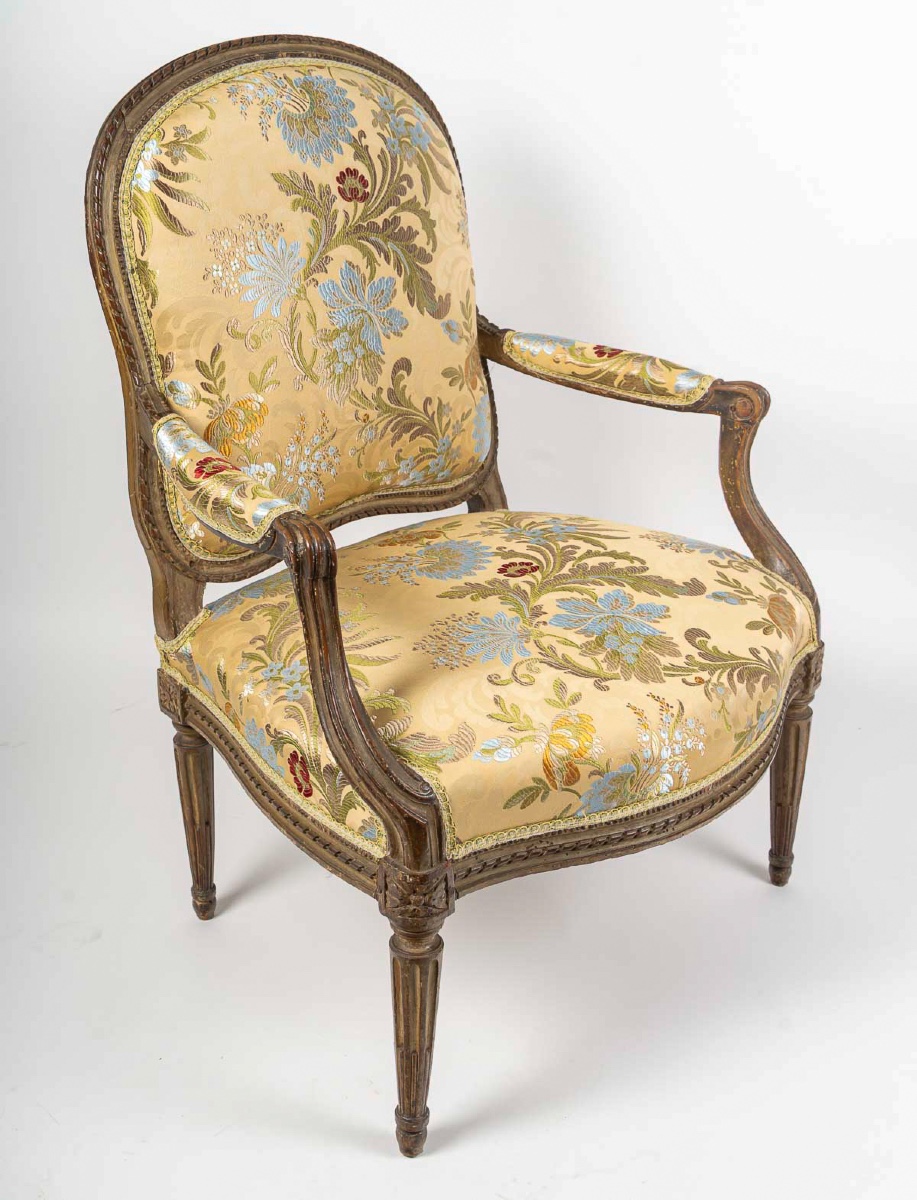
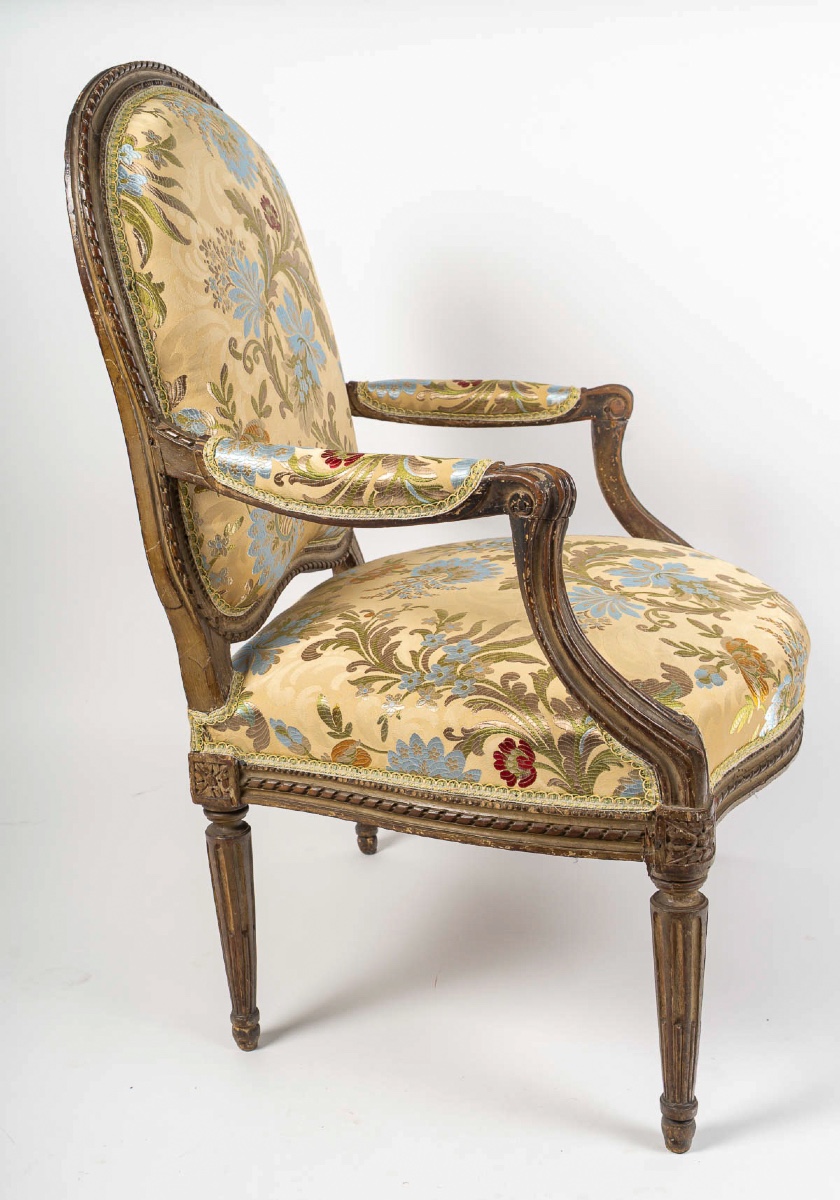

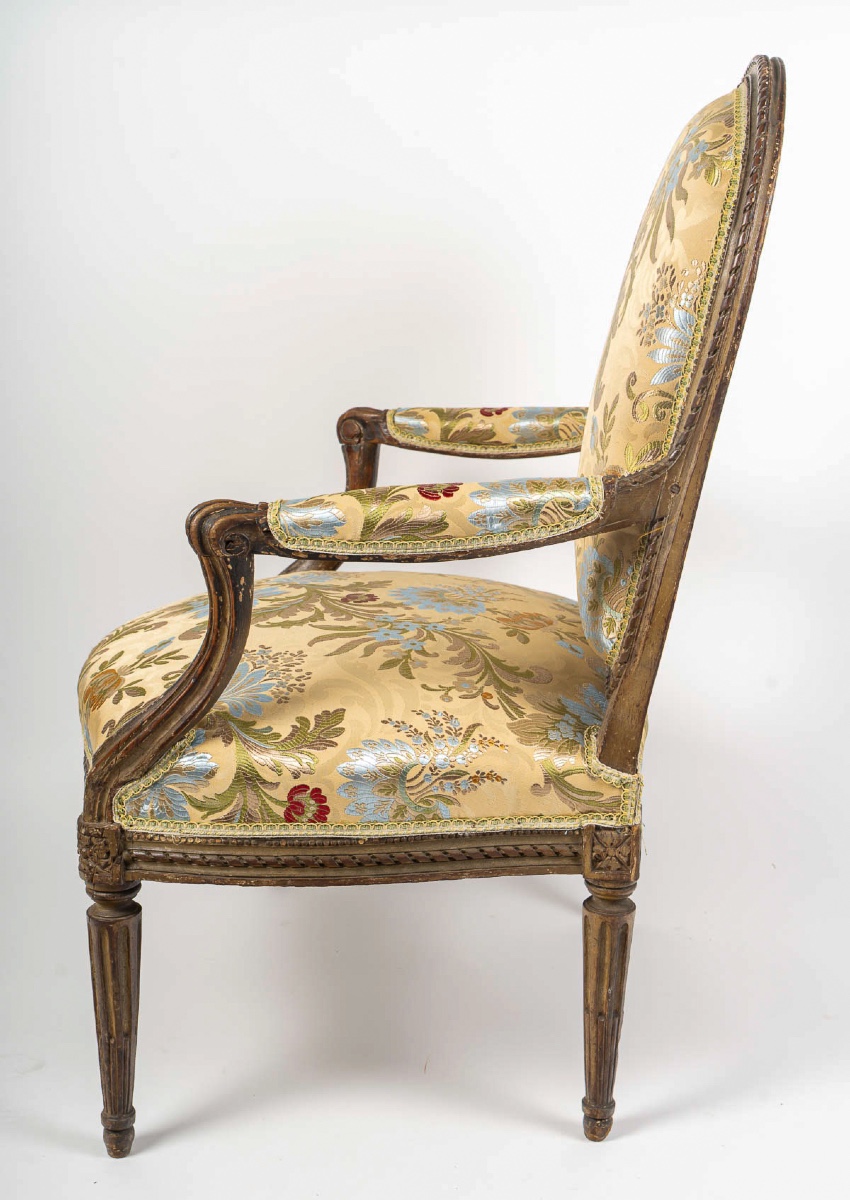
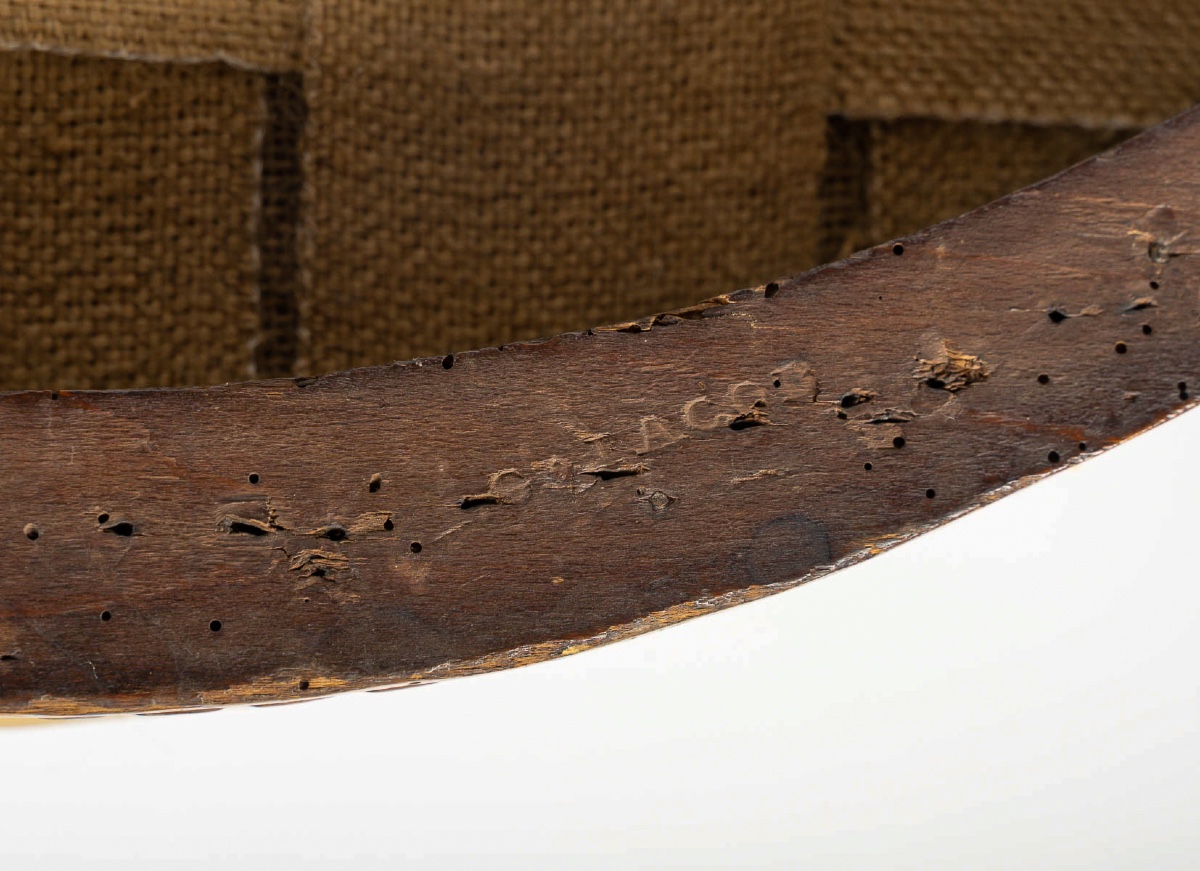























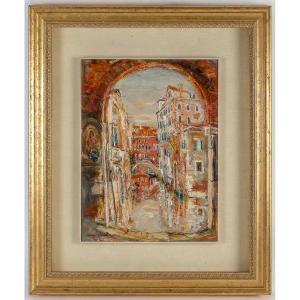
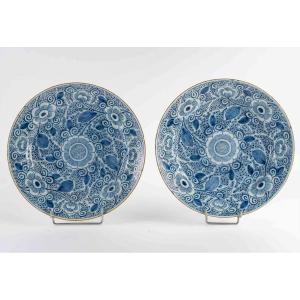
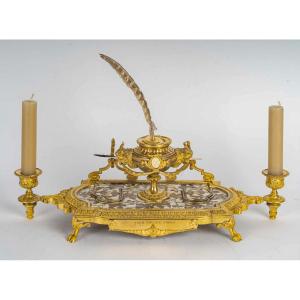


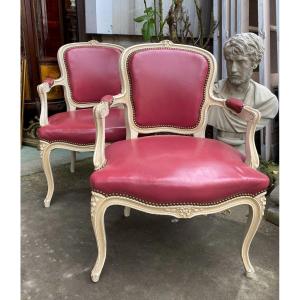
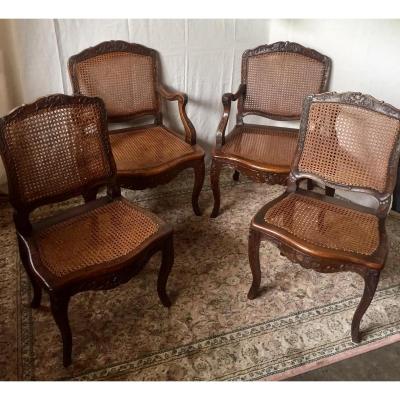

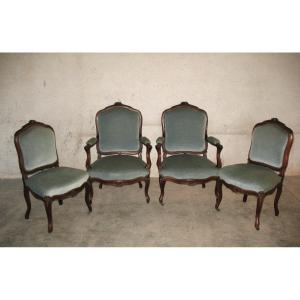



 Le Magazine de PROANTIC
Le Magazine de PROANTIC TRÉSORS Magazine
TRÉSORS Magazine Rivista Artiquariato
Rivista Artiquariato